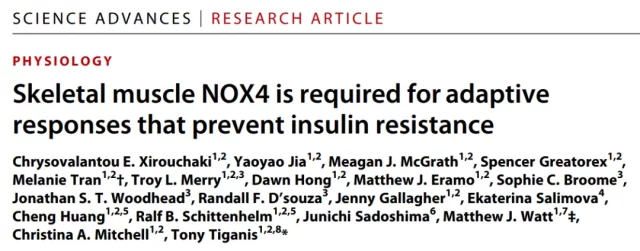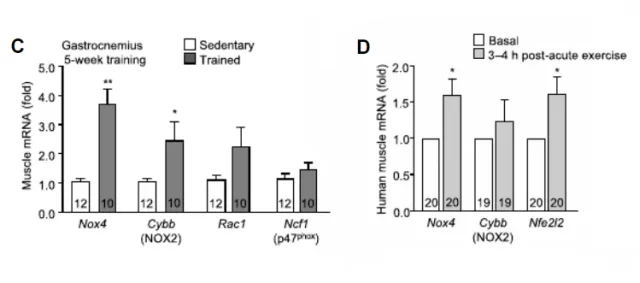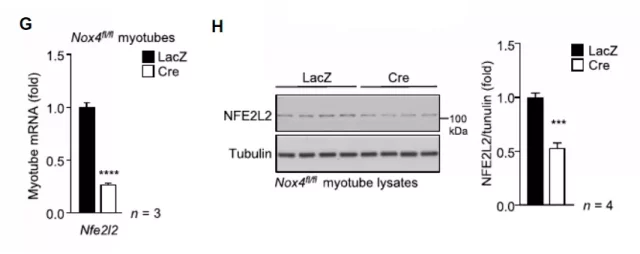Science Advances: Demystifying how exercise is anti-aging
- WHO Releases Global Influenza Vaccine Market Study in 2024
- HIV Infections Linked to Unlicensed Spa’s Vampire Facial Treatments
- A Single US$2.15-Million Injection to Block 90% of Cancer Cell Formation
- WIV: Prevention of New Disease X and Investigation of the Origin of COVID-19
- Why Botulinum Toxin Reigns as One of the Deadliest Poisons?
- FDA Approves Pfizer’s One-Time Gene Therapy for Hemophilia B: $3.5 Million per Dose
Science Advances: Demystifying how exercise is anti-aging
- Red Yeast Rice Scare Grips Japan: Over 114 Hospitalized and 5 Deaths
- Long COVID Brain Fog: Blood-Brain Barrier Damage and Persistent Inflammation
- FDA has mandated a top-level black box warning for all marketed CAR-T therapies
- Can people with high blood pressure eat peanuts?
- What is the difference between dopamine and dobutamine?
- How long can the patient live after heart stent surgery?
Science Advances: Demystifying how exercise is anti-aging.
The meaning of life lies in exercise. Exercise can make the cells of the body move, which can make people have a good complexion and become healthier. Exercise and health are positively related.
More and more evidences show that exercise has a variety of health benefits, helping to prevent cardiovascular and cerebrovascular diseases, diabetes, obesity, and even improve the effectiveness of various cancer treatments.
Aging is a complex, multi-stage, and gradual process that occurs in the entire process of life. With age, the incidence of type 2 diabetes also increases.
One very important reason is that the decrease in physical activity makes the body’s response to insulin gradually worse.
However, the exact mechanism by which lack of exercise promotes the development of insulin resistance remains a mystery.
December 16, 2021, researchers at Monash University in Australia published an article titled: Skeletal muscle NOX4 IS required for Adaptive Responses that Prevent insulin resistance research papers in Science Advances Journal.
The study found an enzyme that is the key to exercise to improve health. After exercise, the expression of NADPH oxidase (NOX4) in skeletal muscle will increase, which will lead to an increase in reactive oxygen species, which will promote exercise-induced adaptive responses, thereby alleviating the decline in insulin sensitivity associated with aging and obesity.
Importantly, this discovery opens up the possibility of using drugs to promote the activity of this enzyme, thereby preventing the effects of aging on metabolic health and preventing common senile diseases such as muscle atrophy and diabetes.

In this study, the researchers trained the mice for 5 consecutive weeks, and the NOX4 content in the muscles increased by 1.5-2 times after 4 hours of high-intensity exercise.
After the mice continued to exercise for 5 weeks, the expression of NOX4 increased by 3-4 times.
In human exercise, it has also been found that after exercise, it induces NOX4 expression in skeletal muscle.
 In mice and humans, NOX4 expression increases after exercise
In mice and humans, NOX4 expression increases after exercise
Next, the researchers further analyzed the function of NOX4. The researchers found that the expression of NOX4 increased by about 4 times after treatment of mouse myotubes with antioxidants.
When the antioxidant defense gene in the myotube is knocked out, the increase in NOX4 will be eliminated.
Therefore, NOX4 induced in the skeletal muscle after exercise is part of the adaptive antioxidant defense response.
Therefore, skeletal muscle increases the production of NOX4 after exercise, which promotes the adaptive response mediated by reactive oxygen species and protects mice from the development of insulin resistance, which would otherwise occur with aging or diet-induced obesity.
 NOX4 is part of the adaptive antioxidant defense response
NOX4 is part of the adaptive antioxidant defense response
Importantly, the researchers found that once the muscle lacks NOX4, there is no significant change in muscle development or morphology, but the function will be affected, especially the reduction in the production of exercise-induced reactive oxygen species.
In addition, the researchers compared the NOX4 content in the skeletal muscle of young and old mice and found that the NOX4 in the skeletal muscle of old mice was reduced by nearly 50%.
Studies have found that skeletal muscle NOX4 abundance decreases with age, which leads to a decrease in insulin sensitivity, indicating that the level of NOX4 in skeletal muscle is directly related to age-related decline in insulin sensitivity.
The researchers said that the use of drugs to trigger the activation of the adaptive mechanism coordinated by NOX4 may improve aging-related diseases, including insulin resistance and type 2 diabetes.
It is worth mentioning that the antioxidants used in the research are found in natural plants. For example, cruciferous vegetables, broccoli, etc., but the amount currently consumed by people does not have the effect of anti-aging.
In short, the study found the key to exercise to improve health and provided an important target for the development of drugs for aging-related diseases.
Paper link:
https://www.science.org/doi/10.1126/sciadv.abl4988
Science Advances: Demystifying how exercise is anti-aging
(source:internet, reference only)
Disclaimer of medicaltrend.org
Important Note: The information provided is for informational purposes only and should not be considered as medical advice.



